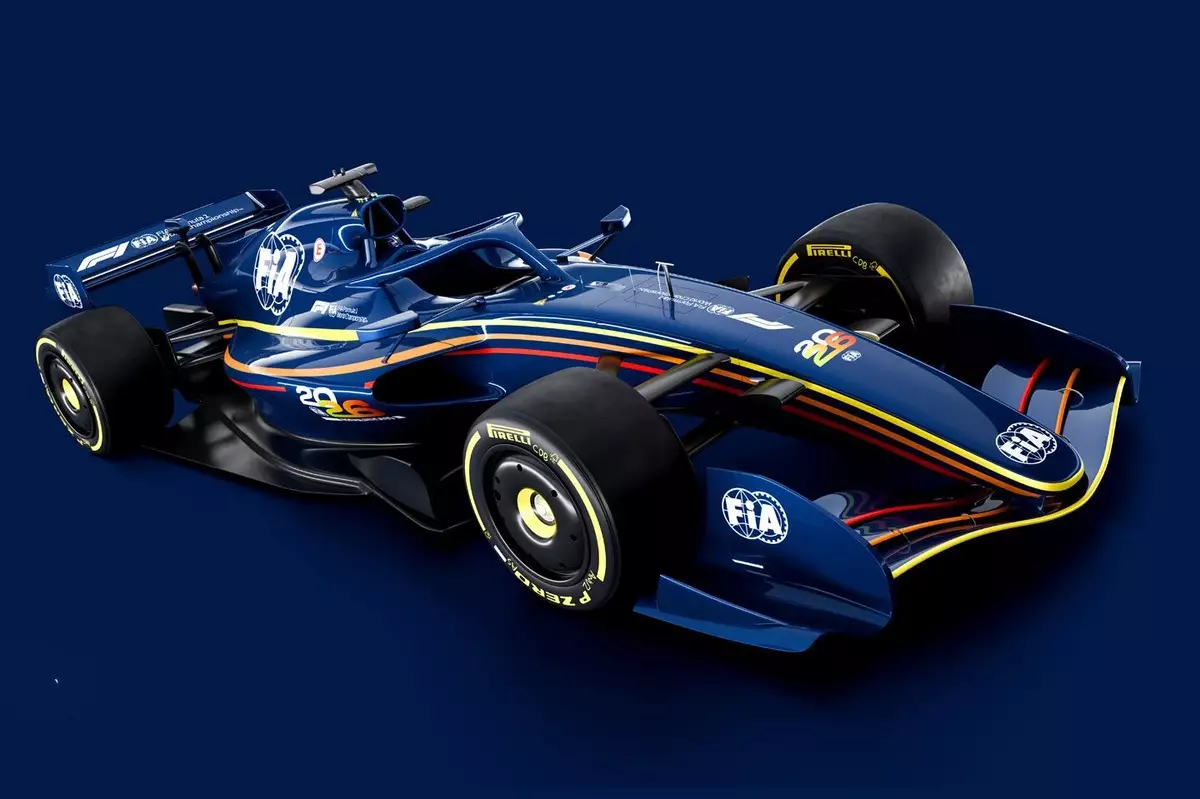Formula 1 stands on the brink of a transformative era, fueled not just by technical regulations but by a fundamental shift in how the sport is experienced and understood. The upcoming 2026 regulations are generating considerable buzz within the paddock, not solely because of the engineering changes but because of how these modifications challenge traditional perceptions of speed, excitement, and competitive edge. While critics often obsess over lap times and raw speed, it’s crucial to recognize that F1’s evolution is rooted in a broader vision: prioritizing close racing, strategic depth, and technological ingenuity over mere quickness.
The narrative surrounding the new regulations often fixates on the potential slowdown of cars. It is easy to interpret this as a decline in entertainment quality; however, a closer examination reveals that this is a calculated consent to craft a more engaging sporting spectacle. The differences in lap times—expected to be between one and two and a half seconds slower initially—are an intentionally orchestrated part of a strategy to foster competition. In fact, these changes could herald a dynamic that benefits teams and drivers, leveling the playing field by reducing dependence on raw downforce and encouraging more intricate racecraft.
Moreover, the emphasis on adapting to a new set of performance parameters signals a pivotal shift in how teams approach car design and race tactics. This recalibration is not an admission of defeat but a deliberate move to enhance strategic depth. Slower but more controllable cars encourage overtaking, strategic tire management, and the integration of hybrid energy management—elements that elevate the racing from raw speed to an intricate chess match. This evolution aligns with the sport’s core identity: balancing technological innovation with the unpredictability of competition.
From Lap Times to Race Dynamics: Redefining Spectator Engagement
The industry’s focus on lap times has long overshadowed other aspects that define the sport’s appeal—namely, competitiveness and driver skill. However, FIA insiders like Nikolas Tombazis illuminate a crucial perspective: lap times are just one metric in a complex performance matrix. He argues that once drivers and fans acclimate to the new cars’ characteristics, the initial shock of slower lap times will fade, leaving behind a renewed appreciation for strategic racing.
This shift also challenges the conventional wisdom that faster cars translate directly to better racing. It’s a flawed equation rooted in a time when raw speed was the sole metric of performance. Today’s focus is on how cars navigate mixed conditions, manage energy, and execute overtakes in a more calculated, deliberate manner. The emphasis on close racing signifies a maturation of the sport—one that values finesse, positioning, and tactical battles over unrelenting outright speed.
Additionally, the iterative development process implies that initial lap times are not final. Teams will continue refining their setups, exploiting new aerodynamic concepts, and optimizing hybrid systems to close the performance gap. This continuous evolution ensures that the sport remains unpredictable and exciting—not just in outright pace but in moments of strategic brilliance. As fans become more engaged with these nuances, the sport’s appeal broadens beyond simply counting seconds.
Technological Innovation: Moving Beyond DRS and Toward Smarter Engineering
Arguably, one of the most revolutionary changes for 2026 is the removal of the traditional DRS system, replaced by active aerodynamics and a manual override boost. This shift exemplifies F1’s commitment to smarter, more sustainable technology that enhances competition without sacrificing safety or spectacle. The “push-to-pass” mechanism, integrated into the new active aerodynamic modes, introduces a controllable power boost that makes overtaking a more strategic and skill-dependent maneuver.
This new system emphasizes driver precision and strategic deployment, requiring skill to balance overtaking opportunities with race consistency. It is no longer about exploiting a rear wing opening; instead, it involves a nuanced understanding of how and when to apply the boost for maximum effect. This innovation serves a dual purpose: it preserves the thrill of overtakes while preventing the obvious, slipstream-based moves that have often characterized modern racing. The result is a more nuanced and skillful form of competition that tests driver judgment rather than relying solely on aerodynamic crutches.
Furthermore, these technological shifts reflect F1’s broader trend of integrating purpose-built systems that foster safety, efficiency, and excitement. Active aerodynamics allow teams to adjust their cars dynamically, opening up new tactical dimensions and creating richer strategic interactions. Fans will find themselves witnessing more calculated overtakes, more race-defining moments, and a landscape where driver ability and team strategy reign supreme over the raw speed that once dominated the sport.
Envisioning a More Strategic and Engaging Future
All these changes point toward a future where Formula 1 is not merely about setting blistering lap times but about weaving a more complex, enthralling tapestry of competition. Slower cars do not equate to dull racing; instead, they invite a fresh appreciation for the intricacies of racecraft, energy management, and strategic planning.
The innovation in active aerodynamics and energy deployment transforms overtaking into a skillful game of chess, where timing, positioning, and adaptability determine success. Instead of a relentless chase for absolute speed, drivers will hone their craft in ways that showcase intelligence and finesse. This evolution aligns with the sport’s philosophical shift—toward a technological landscape that rewards ingenuity and tactical acumen as much as, if not more than, raw horsepower.
By embracing these reforms, Formula 1 not only rejuvenates its appeal but also prepares itself for a new era—one where racing competitiveness, safety, and technological marvels work in harmony to create a spectacle that is as intellectually stimulating as it is visually thrilling. Instead of fearing slower lap times, fans and stakeholders should recognize this as a bold step toward elevating the sport’s essence: the art of racing itself.


Leave a Reply